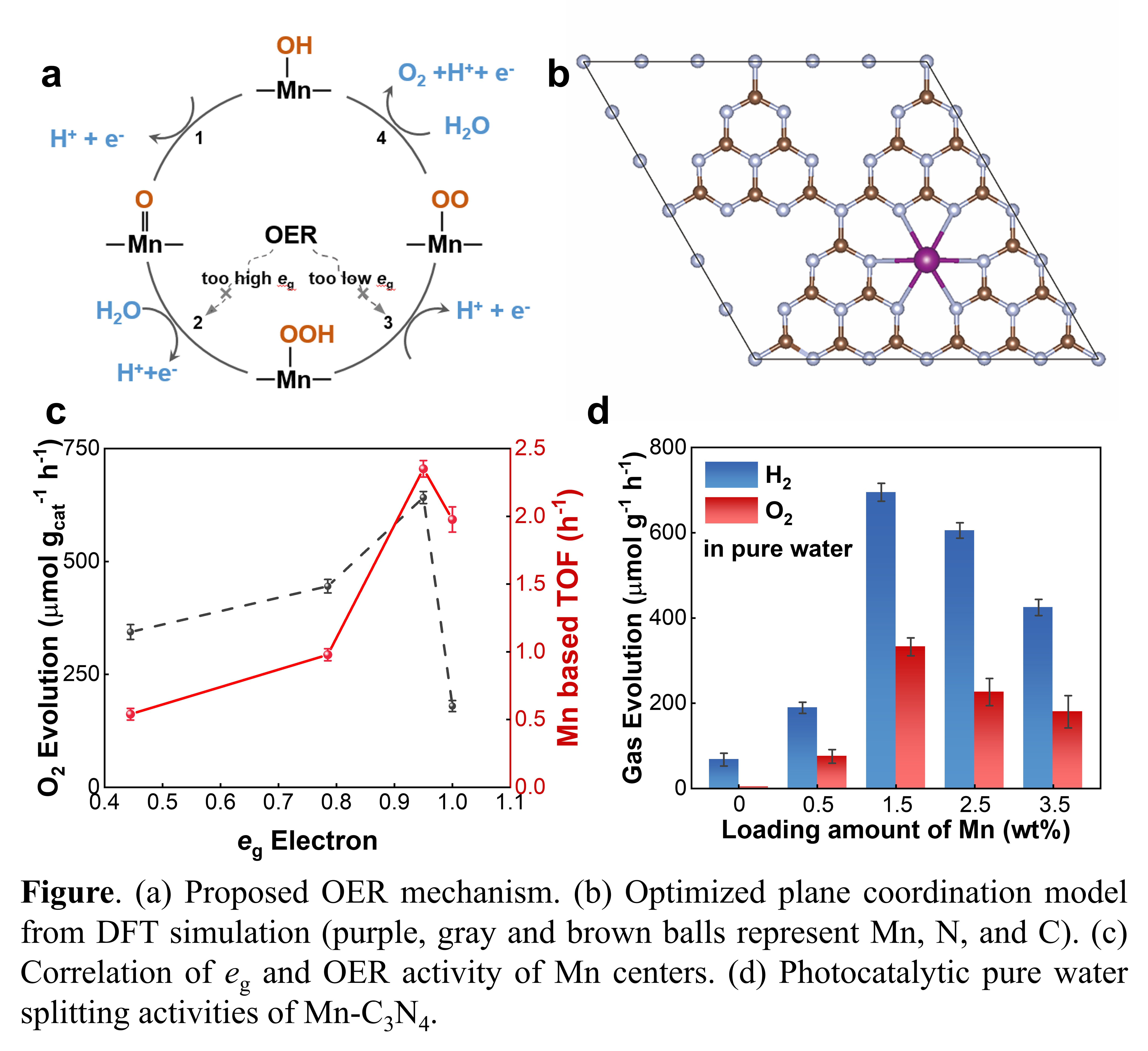(513ax) Boosting Photocatalytic Oxygen Evolution Kinetics By Mn-N-C Motifs with Tunable Spin State for Solar Water Overall Splitting
AIChE Annual Meeting
2020
2020 Virtual AIChE Annual Meeting
Catalysis and Reaction Engineering Division
Poster Session: Catalysis and Reaction Engineering (CRE) Division
Friday, November 20, 2020 - 8:00am to 9:00am
Solar-driven pure water splitting into H2 and O2 without the expense of sacrificial agent is in urgent need for sustainable energy research, yet still remains challenging. Particularly, in addition to charge migration, accelerating oxygen evolution (OER) kinetics that requires much larger overpotential (~700 mV) and more complicated four-electron pathway than proton reduction, is regarded as the bottleneck and key issue for solar water splitting systems. Although rarely reported, it is evidenced that modulating the intrinsic electronic properties (such as spin state) of active site is able to more efficiently promote the photocatalytic activity rather than simply adjusting morphology or loading amount. Towards this, Mn is coordinated within π-conjugated C3N4 in form of Mn-N-C motifs. The spin state (eg orbital filling) of Mn centers are regulated by controlling the bond strength of Mn-N. Experimental results (such as O2-TPD and zero-field cooling/field cooling test) and DFT calculations demonstrate that Mn serves as intrinsic OER active site and the kinetics is dependent on its spin state with an optimized eg occupancy of ~0.95. Specifically, the governing role of eg occupancy originates from the varied binding strength between Mn and OER intermediates. Benefiting from the rapid spin state-mediated OER kinetics, as well as extended optical absorption (up to 600 nm) and accelerated charge separation by the metal-to-ligand state, Mn-C3N4 stoichiometrically splits pure water with H2 production rate up to 695.1 μmol g-1 h-1 and O2 evolution rate of 332.4 μmol g-1 h-1 under simulated sunlight irradiation, and achieves an apparent quantum efficiency of 4.0% at 420 nm, superior to most solid-state based photocatalysts to date. This work for the first time correlates photocatalytic redox kinetics with the spin state of active sites, and suggests a nexus between photocatalysis and spin theory.


